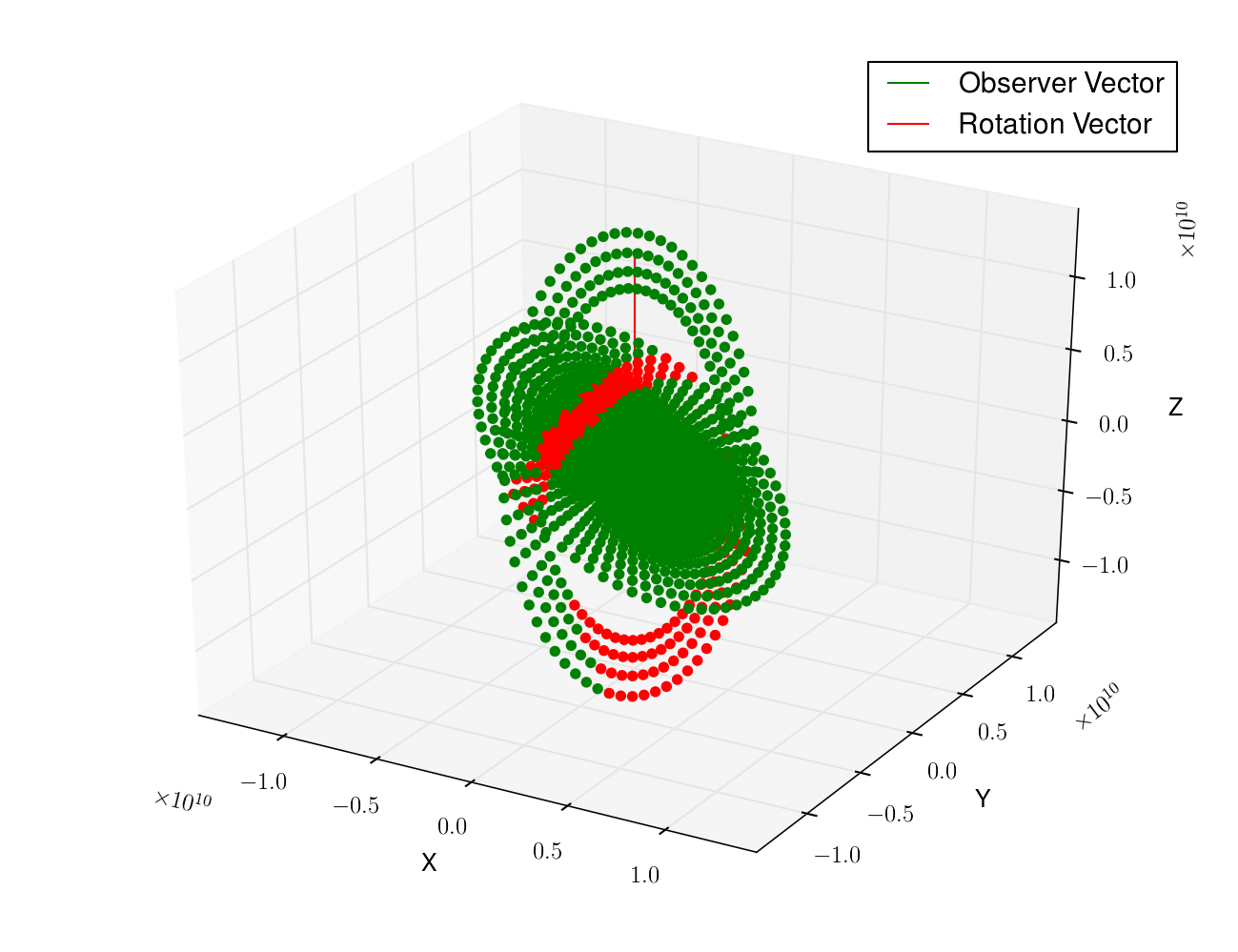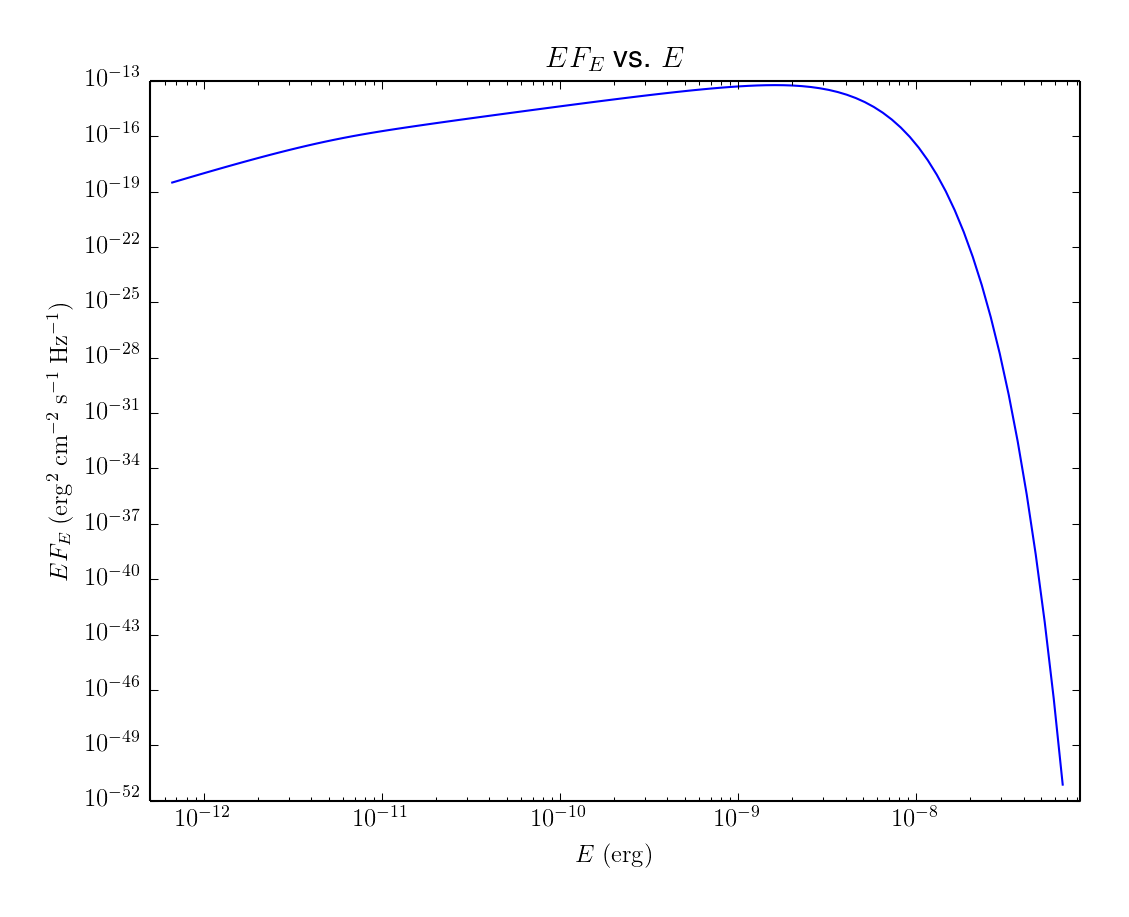Initial study
Our initial study is focused on verifying that the code behaves as we expect it to. One case we used for this involved setting up a flat disk and a flat disk with an inclination. The two spectra should differ by the cosine of the inclination. Another case we are checking is a warped disk where part of the disk blocks the inner portion of the disk. This is a glorified ray-tracing problem; if light from the inner portion of the disk is blocked by another part of the disk, it should not count towards the observed spectrum. In setting up the disks we assume cylindrical symmetry and follow quite closely the geometry layed out in the following paper:
- Self-induced warping of accretion discs [ads]
- Pringle, J. E. 1996, MNRAS, 281
Figure 1 shows the geometry of a disk with an abrupt warp. This warp was chosen to test the ray-tracing algorithm. Disk elements that cannot be seen by the observer should be colored Red and disk elements that can be observed and thus would contribute to the observed spectrum are drawn in Green.
Figure 2 shows the resulting spectrum. The shape resembles that of an extended Black Body spectrum. This is due to the fact that we approximate each disk element as a Black Body with a certain temperature. The disk has a radial temperature profile, so the total spectrum will simply be the sum of each individual Black Body spectrum.

Figure 1: A three dimensional view of the accretion disk with an abrupt warp. Green points indicate the disk element can be viewed by the observer, Red points indicate they are blocked and cannot reach the observer.

Figure 2: A spectrum of the disk geometry shown in Figure 1. It resembles and extended Black Body spectrum since each disk element radiates as a Black Body with a different temperature.